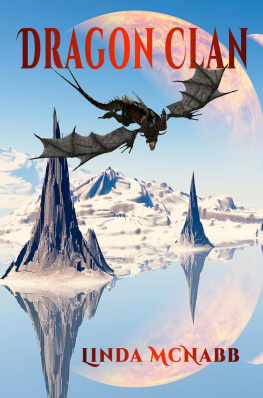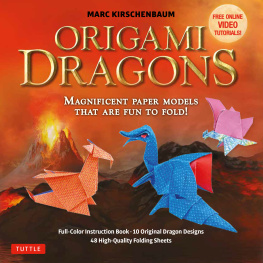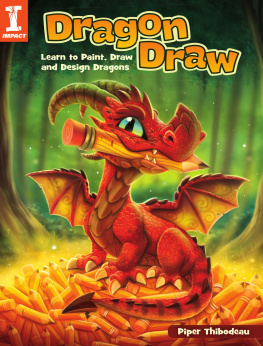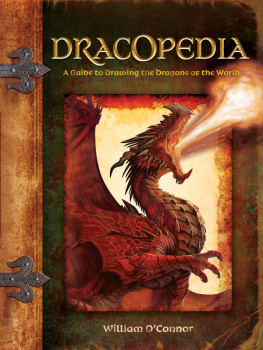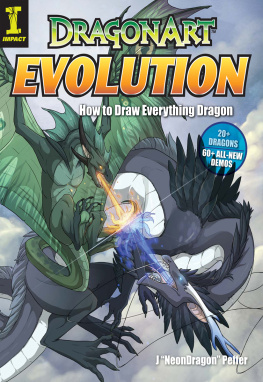
Dragons
In this book, youll find a wealth of different types of dragons, which have been categorized using the more common terms and definitions from role-playing games, fantasy books, video games, and mythological tales. You also will discover some creatures in this book that may not appear very dragonlike (such as the naga on ), but they function as dragons in certain regional mythologies. Before delving into the step-by-step lessons, youll learn a little about my methods for drawing these fanciful creatures, including how to build on basic shapes and apply different shading techniques. And youll learn how to get the most out of a variety of mediafrom charcoal pencil to India inkso you can make your dragon drawings the best they can be. Michael Dobrzycki

2007, 2011 Walter Foster Publishing, Inc. Artwork 2007 Michael Dobrzycki. All rights reserved. Walter Foster is a registered trademark.
This book has been published to aid the aspiring artist. Reproduction of the work for study or finished art is permissible. Any art drawn or photomechanically reproduced from this publication for commercial purposes is forbidden without written consent from the publisher, Walter Foster Publishing, Inc.
Digital edition: 978-1-61059-844-6
Softcover edition: 978-1-60058-032-1
CONTENTS
T OOLS AND M ATERIALS
One of the great joys of drawing is that you can do it just about anywhere. There is a wide array of time-tested materials available for the amateur and professional artist alike, from pencils and papers to erasers and sharpeners. You get what you pay for, so purchase the best you can afford at the time, and upgrade your supplies whenever possible. Although anything that will make a mark can be used for some type of drawing, youll want to make certain your magnificent efforts will last and not fade over time. And, if you want to give your dragon drawings a bit more pizazz, there are materials such as ink, charcoal, and watercolor paint that can be used to do just that. Here are some of the materials that will get you off to a good start.

Drawing Papers For finished works of art, its best to use single sheets of drawing paper, which are available in a range of surface textures: smooth grain (plate finish and hot pressed), medium grain (cold pressed), and rough to very rough. Depending on the media you use, you may want to experiment with different textures; rough paper is ideal when using charcoal, whereas smooth paper is best for ink.
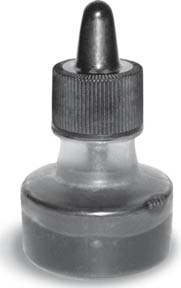
Ink To add dynamism to my artwork, I sometimes incorporate India ink, which is available in bottles. For dark, permanent lines, apply pure (undiluted) India ink with a paintbrush. I also sometimes dilute the ink with water to apply a thin, light gray tone (called a was). These washes also help add depth to a drawing.

Watercolor Paint I can achieve the same wash effect (see Ink) using watercolor paint. Watercolor paint comes in tubes or cakes; I prefer tubes.
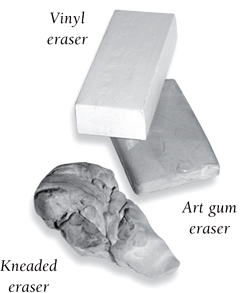
Artists Erasers Different erasers serve different functions; youll want a few different kinds on hand. You can form a kneaded eraser into small points to remove marks in tight areas. A vinyl eraser removes pencil marks thoroughly, and it serves as a workhorse for me. An art gum eraser crumbles easily, so it is less likely to mar the papers surfaceuse this when doing a lot of erasing!
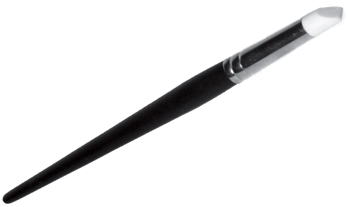
Color Blender A color blender is a soft, rubber-tipped tool that is designed to manipulate paint on canvas. In pencil drawing, it comes in handy for making deliberate, controlled smudges.
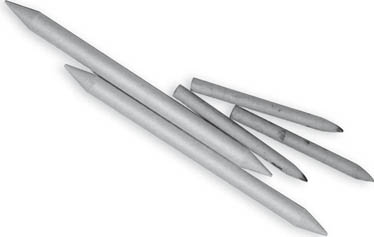
Tortillons These paper tools (also called blending stumps) can be used to blend and soften pencil strokes in small areas where your finger or a cloth is too large. You also can use the sides to quickly blend large areas. After use, gently rub dirty stumps on a cloth to remove excess graphite.
D RAWING T OOLS
Drawing pencils are classified by the hardness of the lead (really graphite). The soft leads (labeled B for black) make dense, dark marks, and the hard leads (labeled H for hard) produce very fine, light gray lines. An HB pencil is somewhere between soft and hard. A number accompanies the letter to indicate the intensity of the leadthe higher the number, the harder or blacker the pencil. To start, purchase a minimum of three pencils: 2B, HB, and H. Aside from graphite pencil, you also can use a charcoal pencil for very dark black marks or a colored pencil for softer black marks. If you want to define your pencil lines with a bold application of ink, use waterproof ink pens or permanent marker. If youre looking for lighter, thinner lines, you even can use a regular ballpoint writing pen!

HB An HB pencil with a sharp point produces crisp lines, offering a good amount of control. With a dull point, you can make slightly thicker lines and shade small areas.

Charcoal and Colored Pencil Charcoal is very soft, so it smudges easily and makes a dark mark. A black colored pencil has a waxy binder that resists smudging, to a degreeas a result, colored pencil is rather difficult to erase.

Permanent Marker The line produced by a permanent marker is thick and very easy to control. The ink of many permanent markers will fade over time, so you may want to spray your drawing with fixative.

Paintbrushes A few good paintbrushes make applying ink more enjoyable. Round brushes like these taper to a natural tippurchase them in a variety of sizes, from very small for adding details to medium for filling in larger areas.
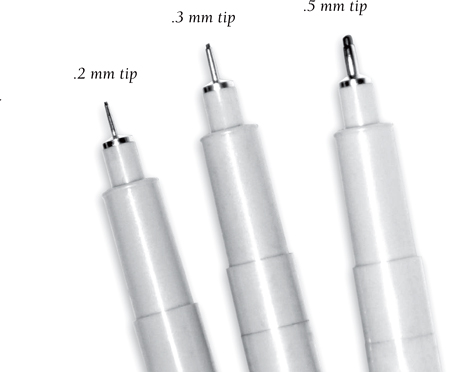
Next page

